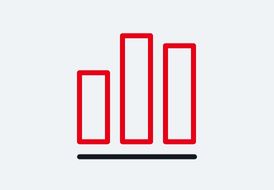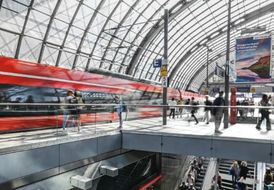Development in the relevant markets
In Germany, we assume dual responsibility for rail transport as a result of our integrated Group structure. We are both the operator and primary user of the track infrastructure. The resulting greater focus on customers and efficiency in our infrastructure benefits all train operating companies without discrimination. In addition to the Group’s internal code of conduct, competitive neutrality of our track infrastructure is ensured by means of regulation that is considered strict by international standards.
DB track infrastructure in Germany / selected key figures | 2022 | 2021 | Change | |
absolute | % | |||
Infrastructure customers | 453 | 453 | – | – |
Intra-Group railways | 17 | 18 | –1 | –5.6 |
Non-Group railways | 436 | 435 | +1 | +0.2 |
Train-path demand (million train-path km) | 1,133 | 1,109 | +24 | +2.2 |
Intra-Group railways | 713.2 | 694.4 | +18.8 | +2.7 |
Non-Group railways | 419.8 | 414.3 | +5.5 | +1.3 |
Share of non-Group railways (%) | 37.1 | 37.4 | –0.3 | – |
Station stops (million) | 159.8 | 158.8 | +1.0 | +0.6 |
Intra-Group railways | 114.7 | 112.7 | +2.0 | +1.8 |
Non-Group railways | 45.1 | 46.1 | –1.0 | –2.2 |
Individual figures are rounded and therefore may not add up.
While the number of station stops is roughly at the previous year’s level, train-path demand increased in 2022. The key reason for this, in addition to the catch-up effects after the Covid-19 pandemic, was the significantly lower impact of unanticipated events (for example thunderstorms or omission of GDL strikes). Due to the partial takeover of Abellio transport services by DB Regional and the expansion of services at DB Long-Distance, the intra-Group railways were able to regain market share, contrary to the long-term trend.


